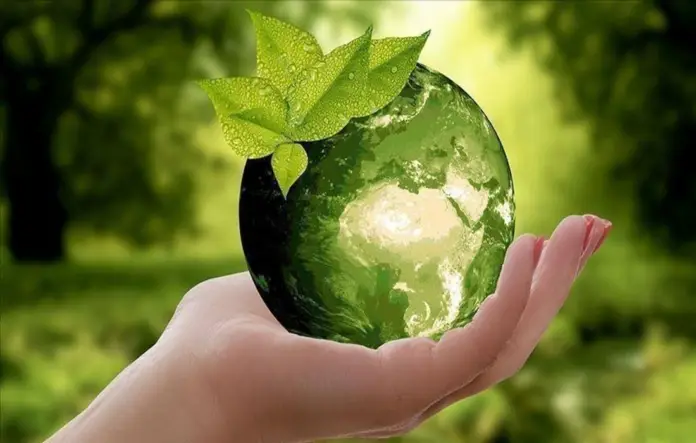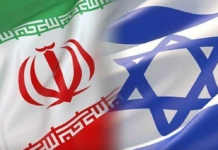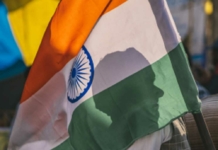When I imagine strength, helping the weaker to sustain comes to my mind. Our planet today, is resource stressed and consumption strained. Conflicts rage and poverty roars as inequality howls. It is an age in which, we have agitated the climate to an extent that it has started projecting bleak pictures of us into the future. The strength of the stronger shall be put to test to help sustain those who cannot afford to stand this onslaught. Testing the stronger is not a favor humanity today stands for, rather it is an obligation in wake of the ecological damage inflicted by the stronger in its quest for development, the raison d’etat for world leaders for their ongoing work on sustainable development agenda. Sounds simpler said, than, understanding of the same by a common man. Basic questions are raised in minds pertaining to this concept of sustainable development.
The doubts therein are structured on basis of “what”; makes us think we have arrived in the age where sustainable development has surfaced as a survival need. It then leads us to think “why”; we should define it as our goals for the future generations. Then comes “which”; are the foremost areas to turn our attentions to. And last but not the least a big “how”; to do it. An endeavor shall be made here to find answers to these interrogatives. We are the dwellers of a new age. An age of interconnectivity, where nothing is purely global and nothing is purely local. Everything, global seems to be local and local tends to be global. What transcends the borders as such, which gives us a semblance of this interconnectivity? In simpler words the speed and intensity of business ideas, emerging technologies, people and their professions and above all the recent pandemic which brought the world to a grinding halt, all the more signify the age we live in.
Hence high speed development, it’s fallouts and solutions following suite. There are around 7.4 billion people who are either fighting or fortifying their foothold in the quest for planet resources. There are poor who are looking for food, safe drinking water, habitat and health. Then there are people who are above the poverty line who are looking for better living opportunities for themselves and their generations to come. The rich ones are hoping that technological developments shall further improve their wellbeing. This “Anthropocene” the Greek combo of “anthropo (human-made) “cene” (new) describes this phenomenon as a new human made epoch having physical effects on earth’s climate and biodiversity. World economy growing at a rate of 3-4 percent annually has produced a Gross World Product (GWP) almost two hundred times more than what it used to be in mid of the eighteenth century. This hyper race has resulted in drastic changes in earth cycles like water, nitrogen and carbon.
As of now, experts do understand the enormity of these dangers. Sustainable development is an interplay of three complex variables namely; world economy, global society and earth’s environment. The economic growth dynamics notwithstanding, sustainable development in most easier terms is to foresee the fallouts and how to sustain, when the world economic growth is on a collision course with the earth’s environment. The normative or ethical outlook of sustainable development is global society centric. It therefore, calls for economic growth for all presenting equal opportunities which are socially inclusive, elimination of abject poverty, strengthening of communities and encouraging local solutions where possible. The environment variable is the whip through which nature calls for corrective actions, like control of greenhouse gas emission, reducing the carbon footprint and thus the global warming.
Setting up of Millennium Development Goals (adopted in September 2000) was basically aimed at scaling the efforts for poverty alleviation and it therefore drew a lot of interest across the world. A dozen years down the road at Rio+20 summit in 2012, world leaders called for a similar approach for scaling of efforts on sustainable development through setting up of goals, which were to be termed as Sustainable Development Goals (SDGs). The UNGA (2014, 43) calls for them being concise, easy to communicate, aspirational, action oriented, global and universally applicable. SDGs are to be supported not only through political will and motivation only, but through a provision of problem solving framework. Sustainable Development Solutions Network (SDSN) set up under UN auspices is a step in this direction, supporting SDGs pertaining to health, education, energy, agriculture, conservation of biodiversity and more.
The bottom line however remains the same; stronger needs to give up more, for weaker to sustain more. Pakistan has affirmed its commitment to 2030 Sustainable Development through incorporation of SDGs in national development agenda. SDGs support units have been set up at federal and provincial planning levels under arrangements of Ministry of Planning, Development and Special Initiatives. May sound cosmetic, but support at the governmental level is imperative for SDG implementation. However, the state on ground is not all that green. Basic necessities like health, safe drinking water and shelter remain an elusive dream for the population. Recent scarcity of food and water in desert stretches of Punjab and Sind, is a case in point. Sustainable development is in fact a function of economic sustainability, which currently seems to be a farfetched dream. A public private partnership model with requisite networking may ease out the situation for sustainable development in the country.






